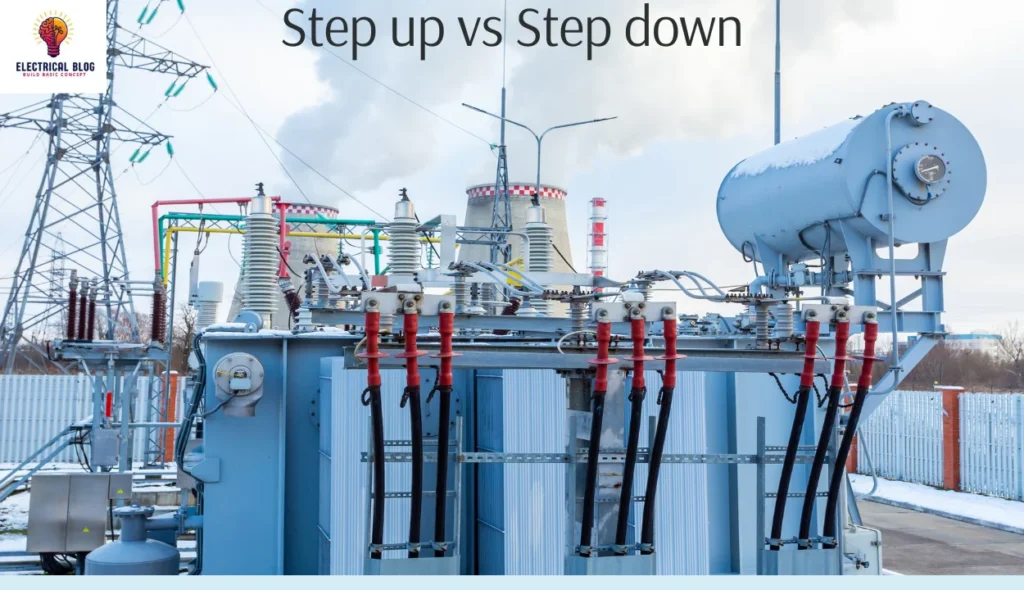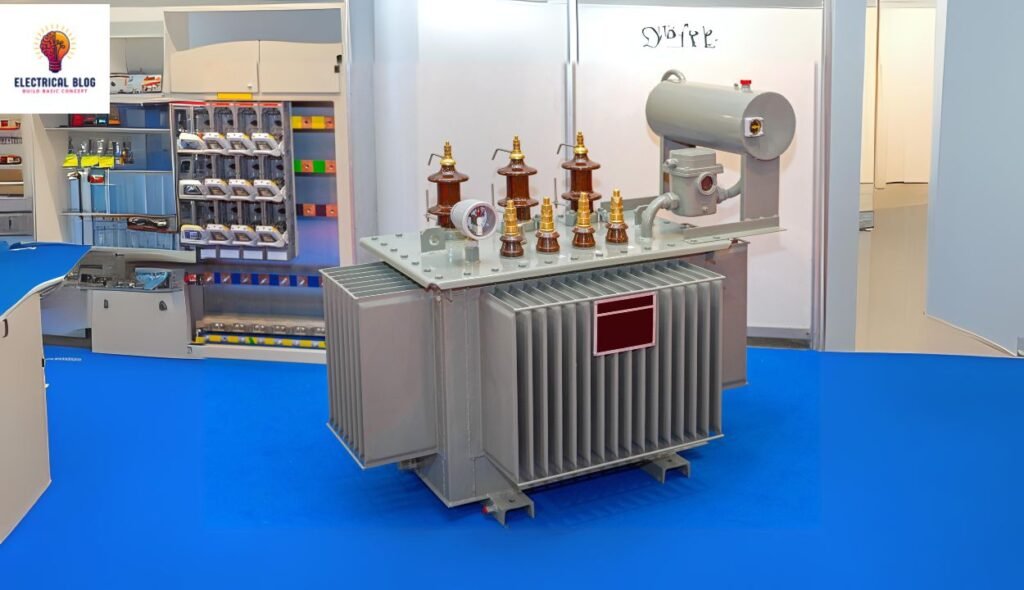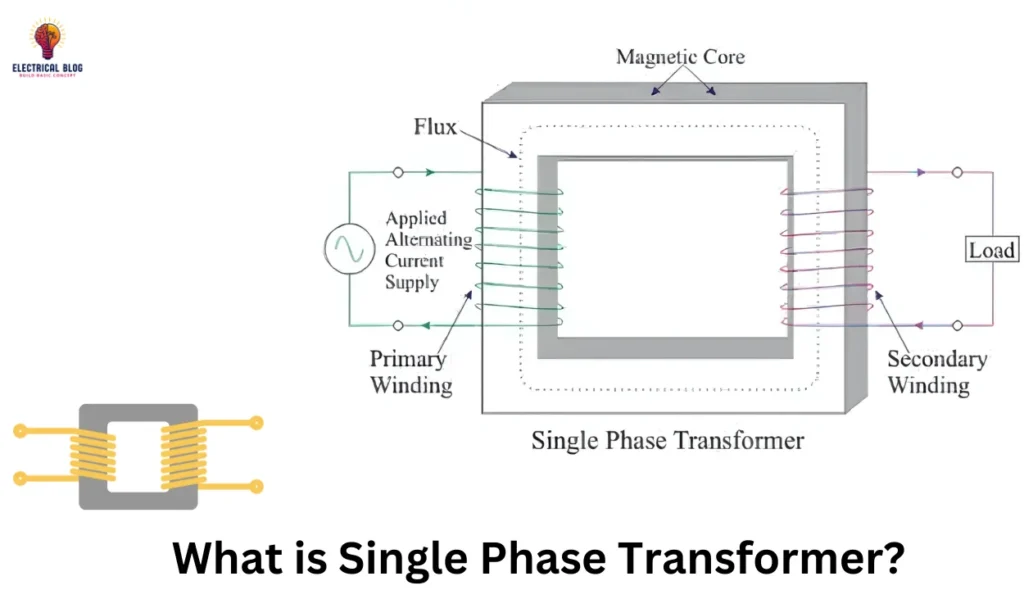Introduction
In my experience working with electrical systems, understanding transformers is crucial. A step-up transformer increases voltage levels, making it ideal for power plants and long-distance transmission. Conversely, a step-down transformer reduces high voltage to a safer level, ensuring safety in domestic and industrial use.
The working mechanism of these devices highlights their key differences and role in power transmission. By applying these principles, we can effectively manage power systems and improve electrical networks. Knowing their applications is vital for optimizing system work, whether dealing with a lower-level or higher-level power setup.
What are Transformers?
A transformer is a device that helps transform AC voltage levels, ensuring stable output voltage. Acting as a passive component, it efficiently transfers electrical energy between AC circuits through a core that reacts to fluctuating current, generating magnetic flux and inducing an electromotive force.
These are categorized into step-up and step-down types, ideal for managing power losses in power distribution lines. By offering better control over fluctuations, they prevent issues linked to wire resistances, making them essential for safe and effective applications in electrical setups. You can also read Grounding Transformer.
What is a step-up transformer?
A step-up transformer is designed to increase voltage on the secondary side. It has more turns in the secondary windings than in the primary windings, making the output a higher voltage. The voltage is proportional to the number of turns, ensuring efficient energy transfer.
If the primary has N1 turns and carries I1 current, while the secondary has N2 turns with I2, the result is V2 greater than V1. This design effectively decreases current on the secondary side, ensuring controlled power flow through the core for stable performance. You can also read Center-Tapped Transformer.
What is a step-down transformer?
A step-down transformer is designed to decrease voltage on the secondary side while increasing the current. It has more turns in the primary winding (N1) than in the secondary winding (N2), ensuring low voltage output but high current flow. According to Ohm’s law, voltage and current are directly proportional, impacting energy flow.
In this setup, I2 is greater than I1, and V2 remains lower than V1. The secondary windings with fewer turns allow the secondary coil to efficiently manage power levels. This design makes step-down transformers ideal for safe and controlled energy transfer in electrical systems. You can also read Core Balance Current Transformer.
Construction of Step-Up and Step-Down Transformers
Both step-up and step-down transformers share a similar construction with key components like the transformer core and transformer windings. The primary winding in a step-up transformer has fewer turns than the secondary winding, while a step-down transformer has more turns in the primary than in the secondary. This difference effectively controls voltage levels.
The transformer core is made of steel or iron sheets, often formed as laminated steel cores to reduce energy loss. The windings use thick, insulated copper wires for efficient energy transfer, and rollers are included for better insulation support in the coil structure. These main components ensure stable transformer performance.
Working Principle of Step-Up and Step-Down Transformers
Transformers rely on the principle of mutual induction, where a changing current in the primary winding creates a varying magnetic field in the core. This magnetic field induces EMF in the secondary winding, allowing alternating current to flow and reverse direction. Depending on the number of turns in each coil, the voltage can be stepped up or stepped down.
In a step-up transformer, the secondary coil has more turns than the primary coil, converting low-voltage AC to high-voltage AC. Conversely, a step-down transformer has fewer turns in the secondary coil, converting high-voltage AC to low-voltage AC. This ensures that the input power and output power stay balanced.
Using the equation relating voltages, currents, and turns, the transformer neither creates nor destroys electrical power. Instead, power remains the same, with the input and output levels adjusted based on design. This makes transformers essential for stable energy distribution.
Analysis of Step-up and Step-down Transformers
The Transformer Formula shows that power in the primary winding equals power in the secondary winding. This is calculated as:
Vp × Ip = Vs × Is
Proving that the product of voltage and current is equal on both sides.
The Turn Ratio compares Np in the primary coil to Ns in the secondary coil, affecting voltage change. This ratio is key to controlling input power and output power in step-up and step-down transformers.
The efficiency of a transformer is expressed with the symbol η and is calculated as:
(Po/Pi) × 100
It reflects how effectively energy flows, with minimal loss of power, ensuring stable performance.
Why do we need step-up and step-down transformers?
Power plants located far from the main city face the challenge of transporting electricity efficiently. To avoid power loss, a step-up transformer is used at power stations to increase voltage to a great extent, which reduces current and minimizes wasted energy.
At the site where consumption occurs, a step-down transformer is used to reduce the high voltage to a safer level for consumers. This method ensures power is prevented from being lost as it sends energy through wires, improving efficiency and saving valuable energy.
Step-Up and Step-Down Transformer Examples
A step-up transformer is used in power generation stations to increase voltage for efficient transmission over long distances. For instance, it may raise 11 kV to 220 kV to support high-voltage transmission lines.
In residential areas, a step-down transformer is needed to decrease the voltage from power lines to safer, usable levels. For example, it may reduce 220 kV to 220 V for household use, ensuring safe energy delivery.
| Parameter | Step-Down Transformer |
|---|---|
| Primary Voltage (Input) | 220V 3-phase |
| Secondary Voltage (Output) | 110V 3-phase |
| Application | Powering 110V machinery in a building supplied with 220V power |
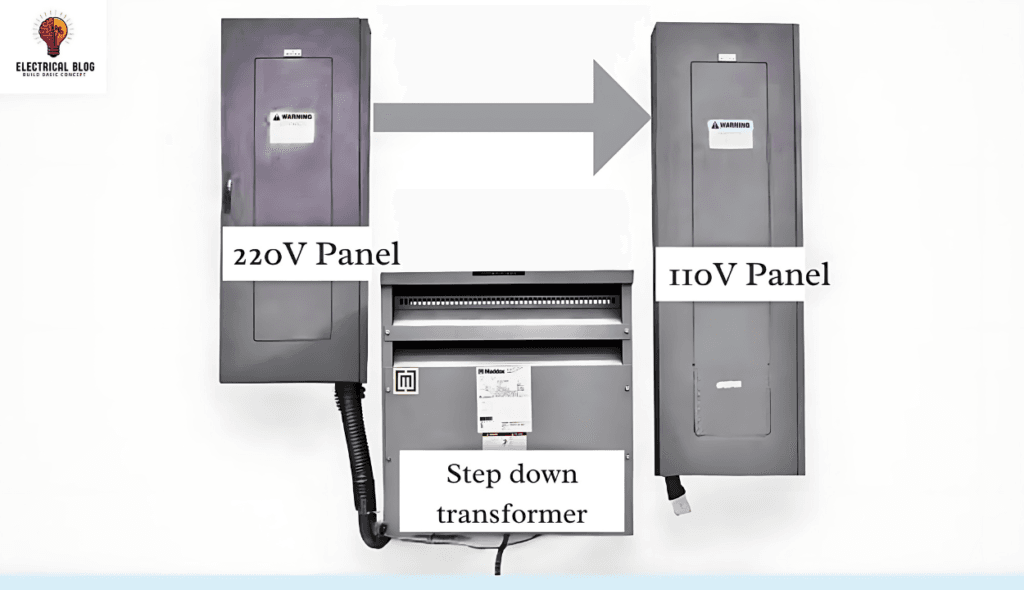
Example: Step-Up Transformer Application 110v to 220v converter
| Parameter | Step-Up Transformer |
|---|---|
| Primary Voltage (Input) | 110V 3-phase |
| Secondary Voltage (Output) | 220V 3-phase |
| Application | Powering large machinery requiring 220V in a building with 110V wiring |
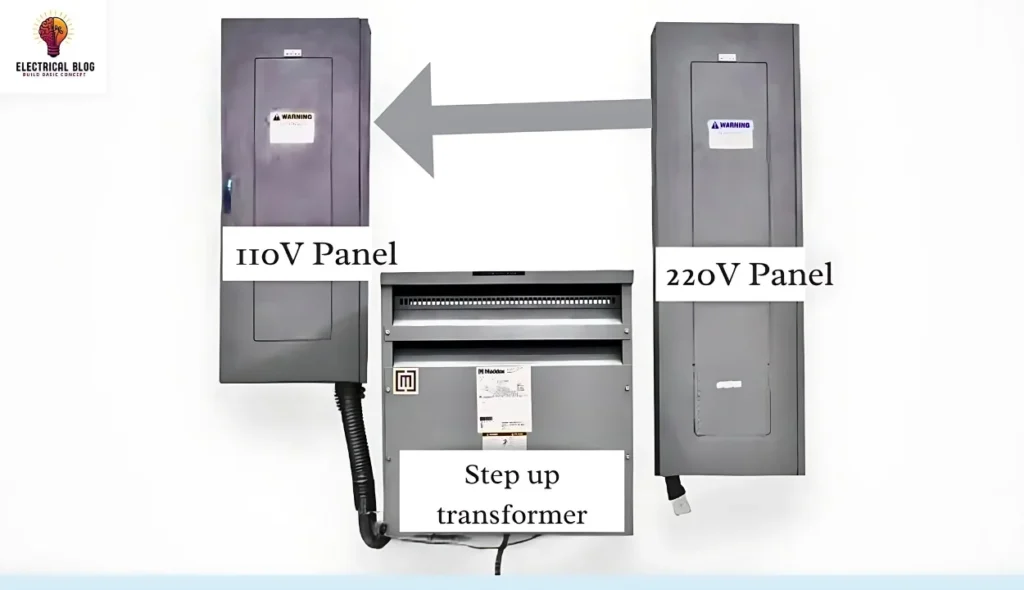
Practical Significance of Step-Up and Step-Down Transformers
Step-up transformers are essential in power transmission as they increase voltage for long-distance supply, helping to reduce energy loss in power lines.
Step-down transformers ensure safe power distribution by lowering voltage to safe levels for residential, commercial, and industrial use.
In renewable energy systems, step-up transformers raise the generated voltage from solar or wind power for a smooth grid connection.
Step-down transformers in industrial applications provide specific voltages for heavy machinery used in manufacturing plants.
Transformers improve adaptability by ensuring electrical devices can function safely by matching their voltage requirements.
Step-Up and Step-Down Transformers: Advantages and Disadvantages
Step-Up Transformer
Advantages:
High efficiency: A step-up transformer helps increase the voltage, ensuring the transmission of power with minimal energy loss over long distances.
High reliability: Known for high reliability, these transformers are durable and provide consistent performance even in tough conditions.
Cooling mechanism: The cooling mechanism in a step-up transformer ensures the system stays at optimal operating temperatures, preventing overheating.
Disadvantages:
Huge in size: Step-up transformers are often huge in size, which can make installation and maintenance more challenging.
Frequent maintenance: Due to the complexity of the design, frequent maintenance is needed to ensure smooth operation.
Large amount of heat: These transformers can generate a large amount of heat, requiring efficient cooling systems to maintain their efficiency.
Step-Down Transformer
Advantages:
Easy to maintain: Step-down transformers are generally easy to maintain, reducing downtime and keeping operational costs low.
Less expensive: Compared to step-up transformers, step-down transformers are less expensive, making them a cost-effective solution for many applications.
Start quickly: They start quickly, providing a reliable source of AC current for household appliances.
Disadvantages:
Different voltages: While step-down transformers reduce voltage, this may not be suitable for all devices, as they work with different voltages than what some systems require.
Large amounts of heat: Like step-up transformers, they also tend to produce a large amount of heat, requiring a good cooling mechanism to avoid damage.
High durability: Although they are durable, their high durability is often compromised by frequent maintenance due to regular wear and tear in some conditions.
Difference Between Step Up and Step Down Transformer
| Feature | Step-Up Transformer | Step-Down Transformer |
|---|---|---|
| Primary Winding | Has fewer turns (N1) than the secondary winding (N2). | Has more turns (N1) than the secondary winding (N2). |
| Effect on Voltage | Increases voltage and steps up power in the output circuit. | Decreases voltage and steps down power in the output circuit. |
| Effect on Current | Current in the output circuit is lower than in the input circuit. | Current in the output circuit is higher than in the input circuit. |
| Maintenance | Requires less maintenance due to stable performance. | Requires high maintenance because of frequent load changes. |
| Applications | Common in X-rays extraction, microwaves, and ovens. | Common in CD players, TV, and washing machines. |
| Mathematical Relation | Represented as N1 < N2. | Represented as N2 < N1. |
Conclusion
In conclusion, both Step-Up and Step-Down transformers play vital roles in the efficient transmission and distribution of electrical power. The Step-Up transformer is key for boosting voltage in long-distance transmission. However, it has some challenges. It’s large, needs regular maintenance, and produces a lot of heat. The Step-Down transformer is popular because it’s cost-effective and easy to maintain. It starts quickly, but it can have problems like generating heat and not working well with different voltages.
Both transformer types have pros and cons. Choosing one depends on your system’s needs, like big power transmission or daily appliances. Understanding these characteristics can help in making the right choice for optimal performance.

